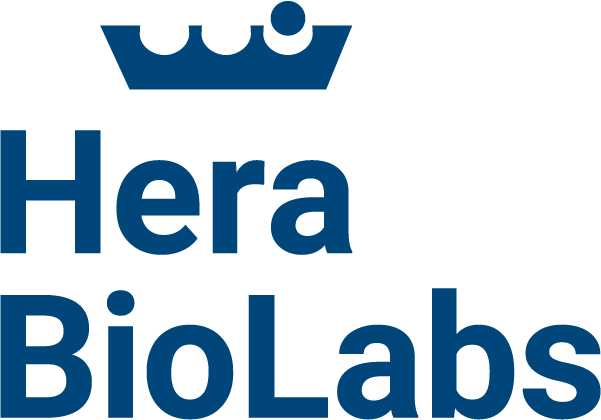In this guide, we provide a description of the MCF-7 cell line – including its history, characteristics like molecular profile, and continued success in animal model studies. Breast cancer represents the most frequently diagnosed cancer in women, comprising over 10% of new cancer cases annually. Globally, it ranks as the second leading cause of cancer-related death among women.[1] These staggering figures reflect a critical public health problem, and research at the molecular level is necessary to define its prognosis and specific treatment.

Research in this field is essential to overcoming both economic and psychological burdens of living with breast cancer, and certain cell lines play a crucial role in this research as they can be used as preclinical models in cancer research. MCF-7 is a commonly used breast cancer cell line that has been promoted for more than 40 years by multiple research groups.
History of the MCF-7 Breast Cancer Cell Line
Sister Catherine Frances (Helen Marion) Mallon, born in 1901, underwent mastectomies in 1963 and 1967 for benign and malignant tumors in her breasts. In 1970, she developed metastatic breast cancer, and researcher Herbert D. Soule at the Michigan Cancer Foundation attempted to develop a cell line from her cancer samples. While most attempts failed, cells from a pleural effusion formed a continuous culture, resulting in the MCF-7 cell line.[2]
Since then, MCF-7 has been widely used in breast cancer research, with nearly 25,000 published reports, as it closely resembles clinical breast cancer – particularly in postmenopausal women with hormone receptor-positive breast cancer.[3]
MCF-7 Molecular Profile and Role in Cancer Research
The MCF-7 cell line is widely used in breast cancer research due to its unique molecular profile and properties. The MCF-7 cell line is estrogen receptor (ER) positive, progesterone receptor positive, and HER2 negative, which are features commonly seen in luminal subtype breast cancers. Because the MCF-7 line is responsive to estrogen, it is commonly used as a model for estrogen-dependent breast cancers. The presence of estrogen receptors on MCF-7 cells allows researchers to investigate the effects of estrogen and anti-estrogen therapies on breast cancer cell growth and survival.
In addition to estrogen receptors, MCF-7 cells also express other receptors that are important for breast cancer research. For example, MCF-7 cells express the androgen receptor, which has been implicated in breast cancer progression and may represent a novel therapeutic target for the disease. While the MCF-7 cell is considered a “workhorse” for investigating estrogen action in breast cancer, it is worth mentioning that these cells also express androgen, progesterone, and glucocorticoid receptors.[4]

Figure 1: The molecular profile and properties of MCF-7 and its interaction with mesenchymal stem cells (MSC)
Moreover, MCF-7 cells have also been shown to possess stem cell-like properties, including the ability to form mammospheres in vitro and to give rise to tumors in vivo. These stem cell-like properties of MCF-7 cells make them a valuable tool for investigating the biology of breast cancer stem cells and for developing novel therapies targeting these cells.
Overall, the molecular profile and properties of MCF-7 cells, including the presence of several important receptors as well as their self-renewing ability, make them a useful model for investigating the underlying biology of breast cancer and for developing new therapies for the disease.
MCF-7 Cell Line Validated in Hera’s SRG Rat Model
It is worth noting that the MCF-7 cell line has been validated in various animal models, including Hera’s SRG Rat model. The SRG Rat is an enhanced immunodeficient rat model that has a severely impaired immune system lacking B-cells, T-cells, and NK-cells – making it an ideal host for cancer cell-line xenografts and PDX models.

This model has demonstrated enhanced utility with high tumor takes and favorable growth kinetics for both cancer cell-line xenografts and patient-derived xenograft (PDX) models. This model overcomes the limitations of smaller animal models enabling larger tumor growth, easier surgeries, and more tissues and serum for analyses, including repeat sampling. The validation of MCF-7 in the SRG rat model further solidifies its importance as a model cell line in breast cancer research.
Take advantage of our comprehensive xenograft efficacy services utilizing the validated SRG platform and other murine tumor models such as NSG mice. With dozens of validated cancer cell lines and PDX models available for immediate screening and our ability to establish new tumor models for clients, we are ready for your inquiries. Learn more about Hera’s in vivo services today.
References:
- Alkabban, F. M., & Ferguson, T. (2022). Breast Cancer. In StatPearls. StatPearls Publishing.
- Soule, H.D., et al., A human cell line from a pleural effusion derived from a breast carcinoma. J Natl Cancer Inst, 1973. 51(5): p. 1409-16.
- Lee, A. V., Oesterreich, S., & Davidson, N. E. (2015). MCF-7 Cells—Changing the Course of Breast Cancer Research and Care for 45 Years. JNCI: Journal of the National Cancer Institute, 107(7), djv073.
- Horwitz KB Costlow ME McGuire WL . MCF-7; a human breast cancer cell line with estrogen, androgen, progesterone, and glucocorticoid receptors . Steroids . 1975 ; 26(6): 785 – 795.
